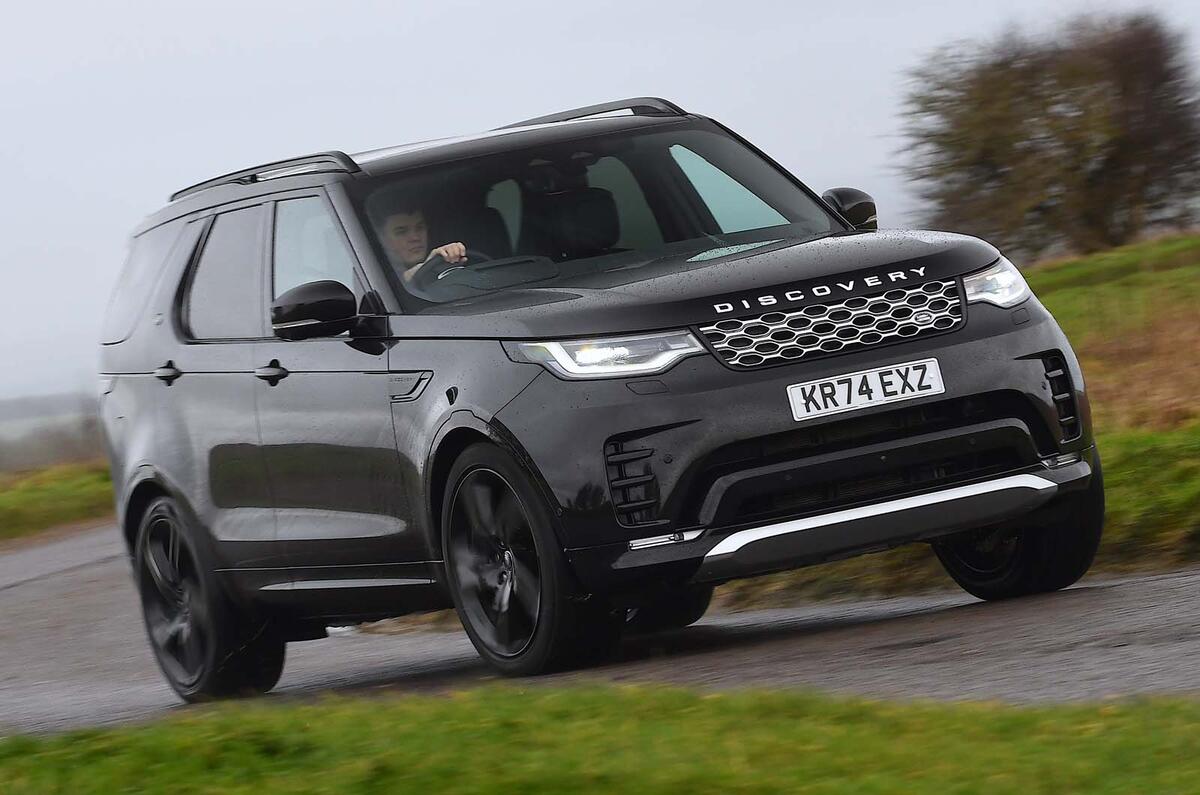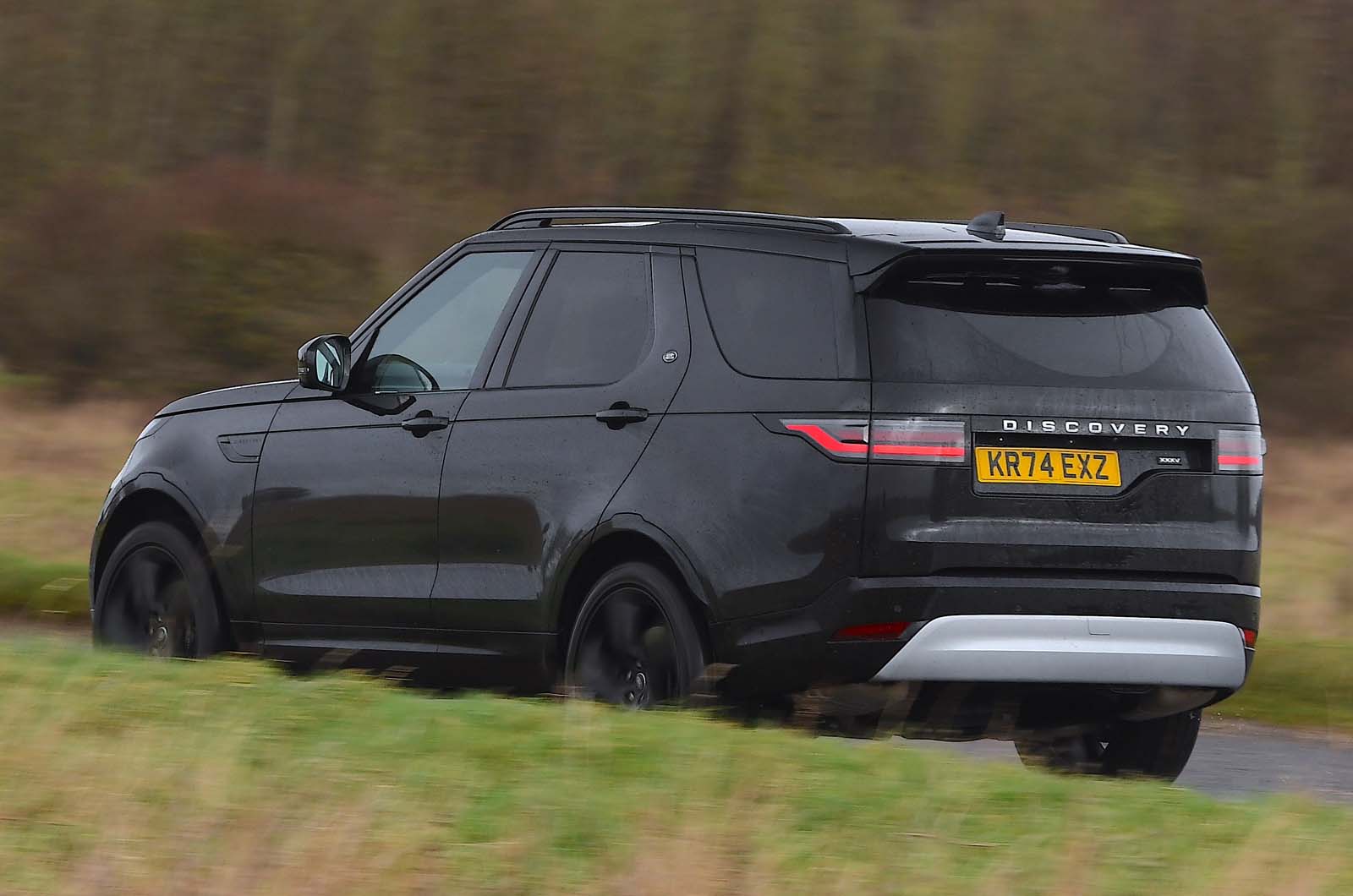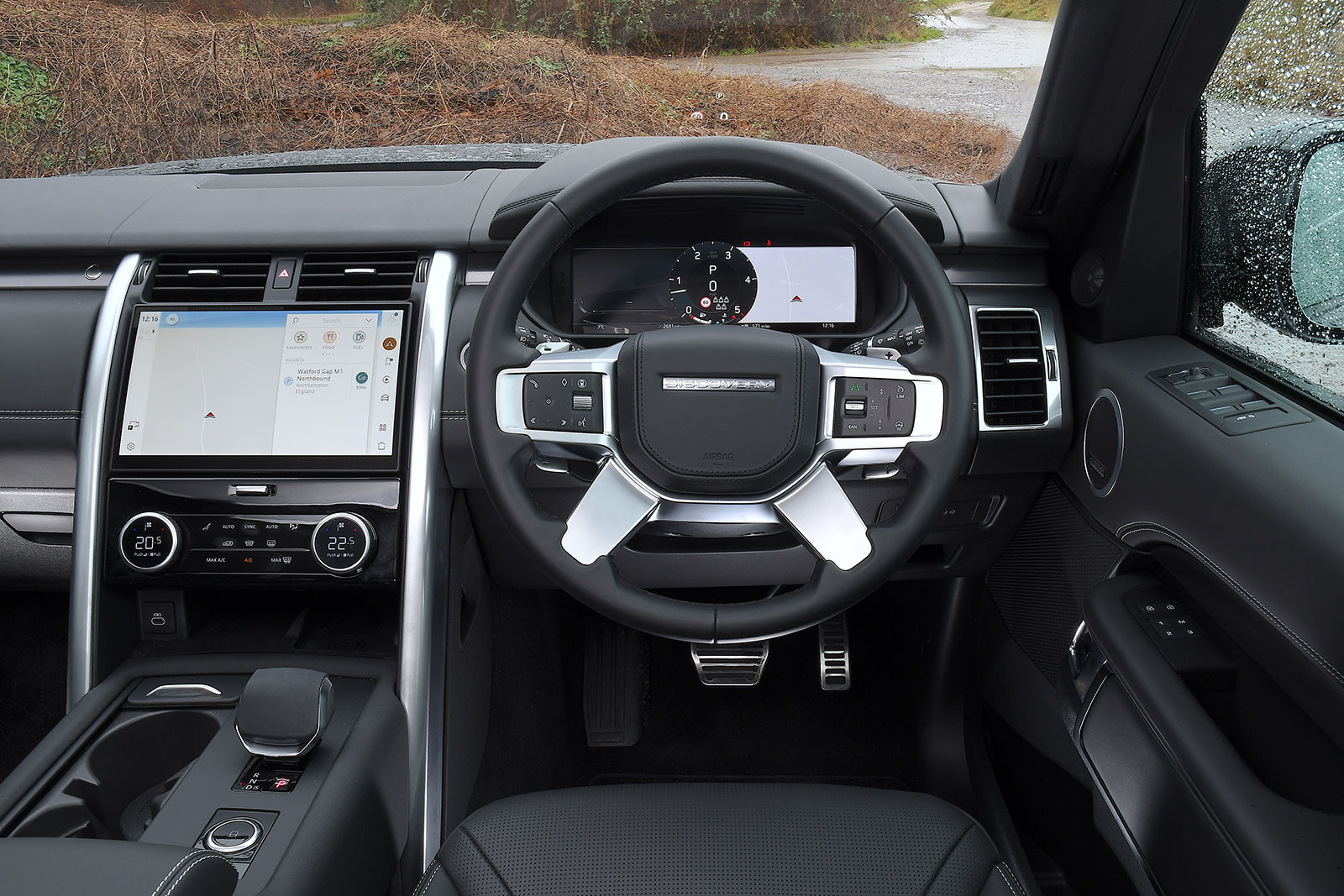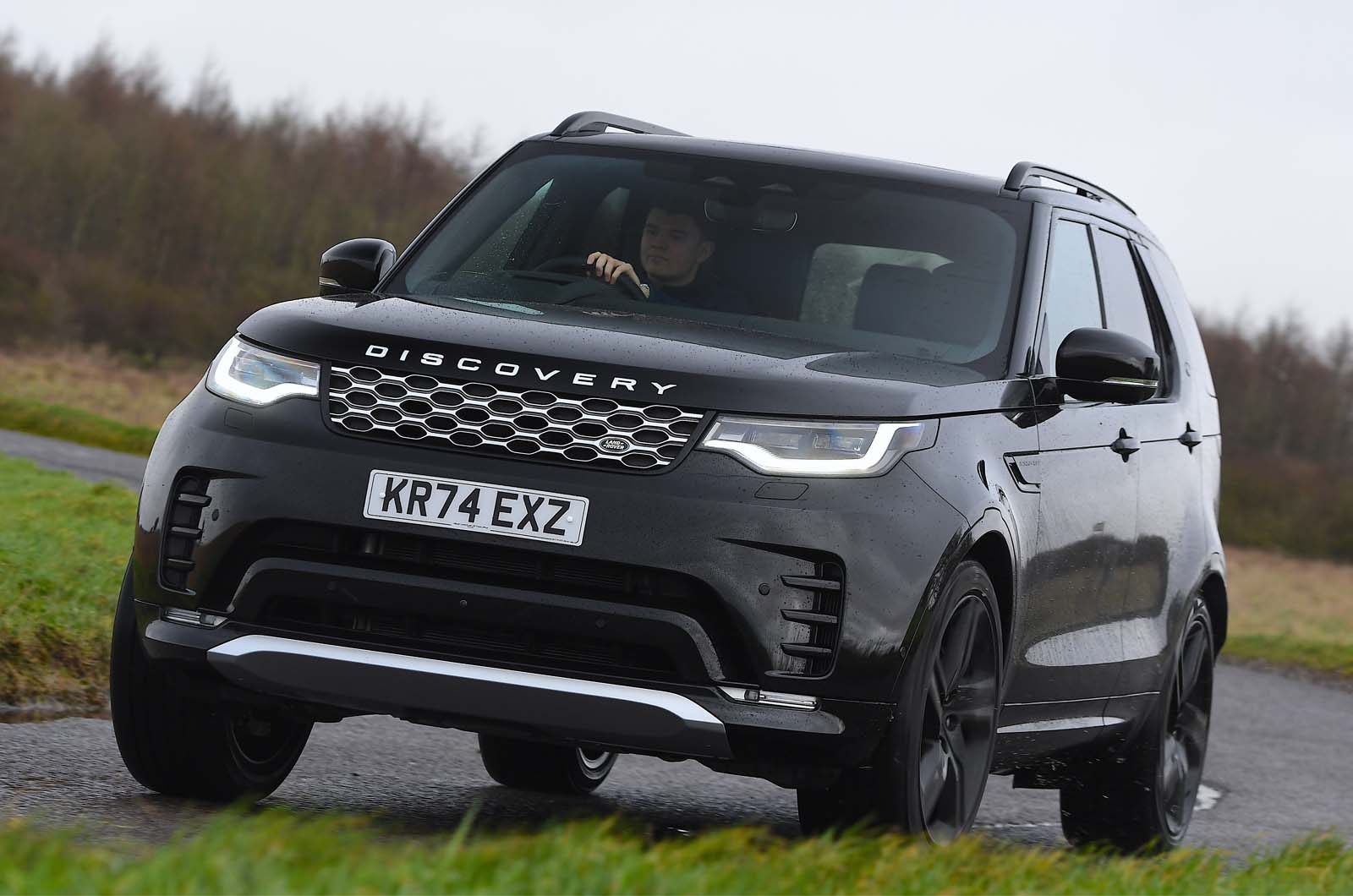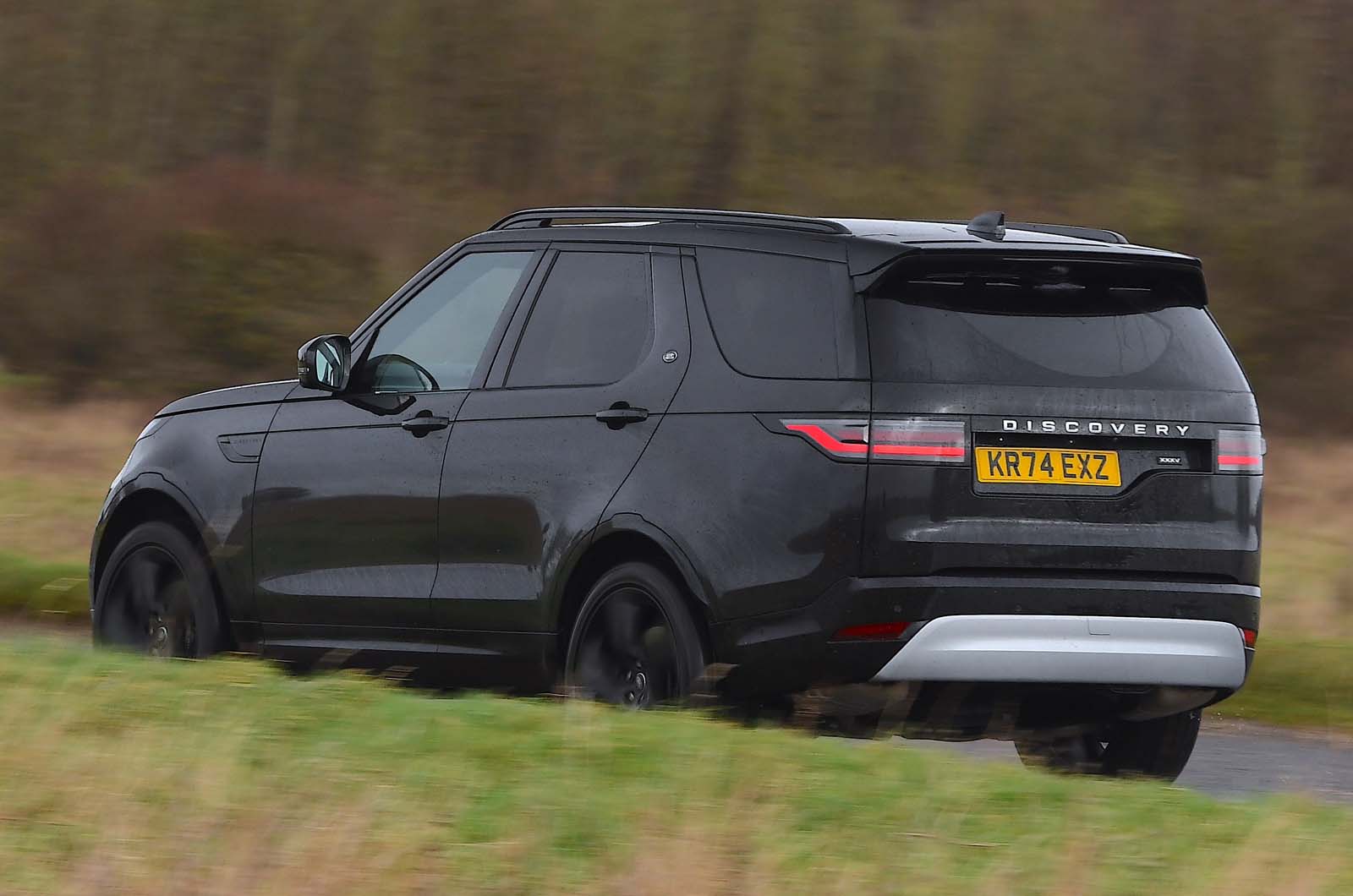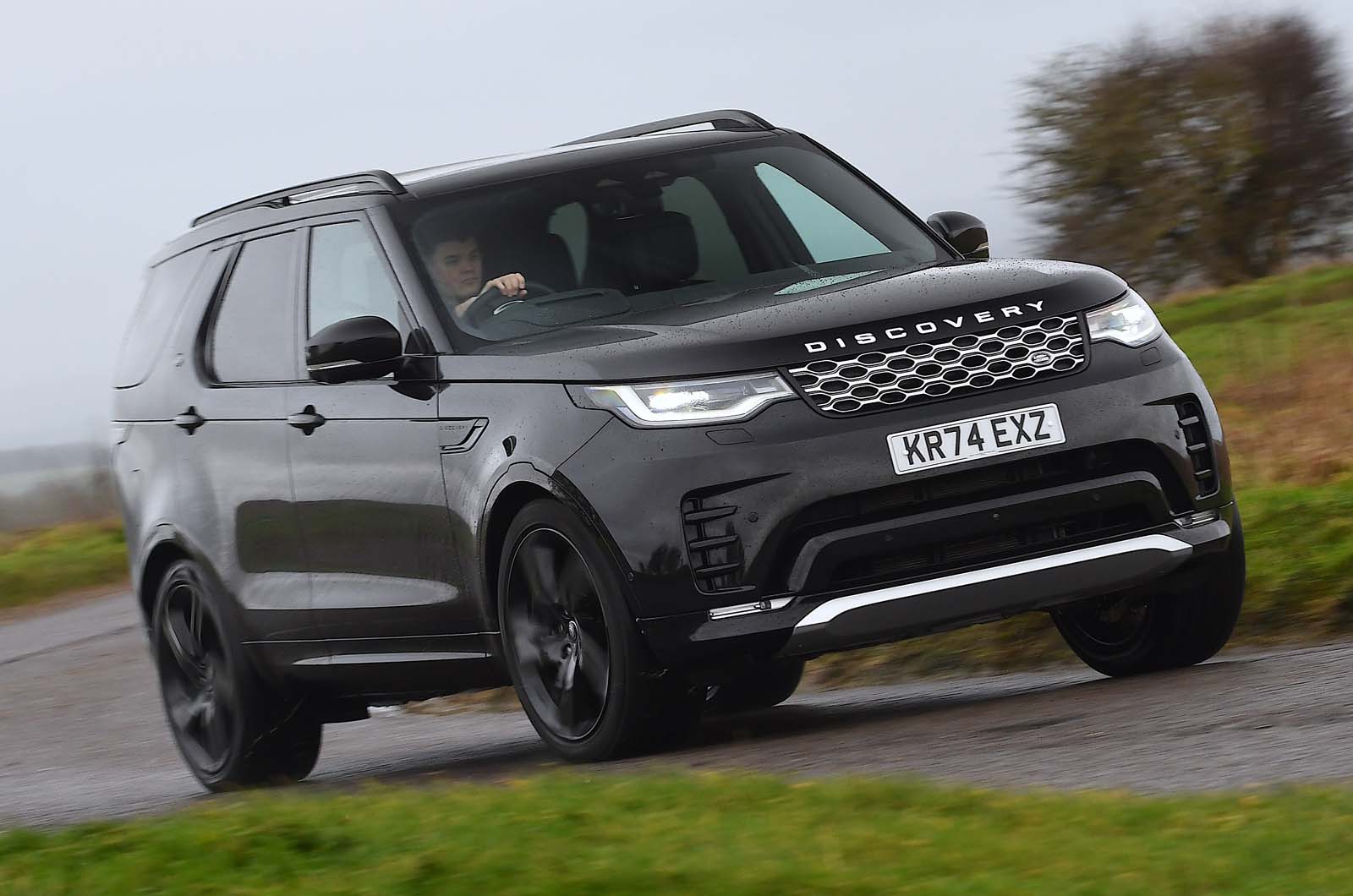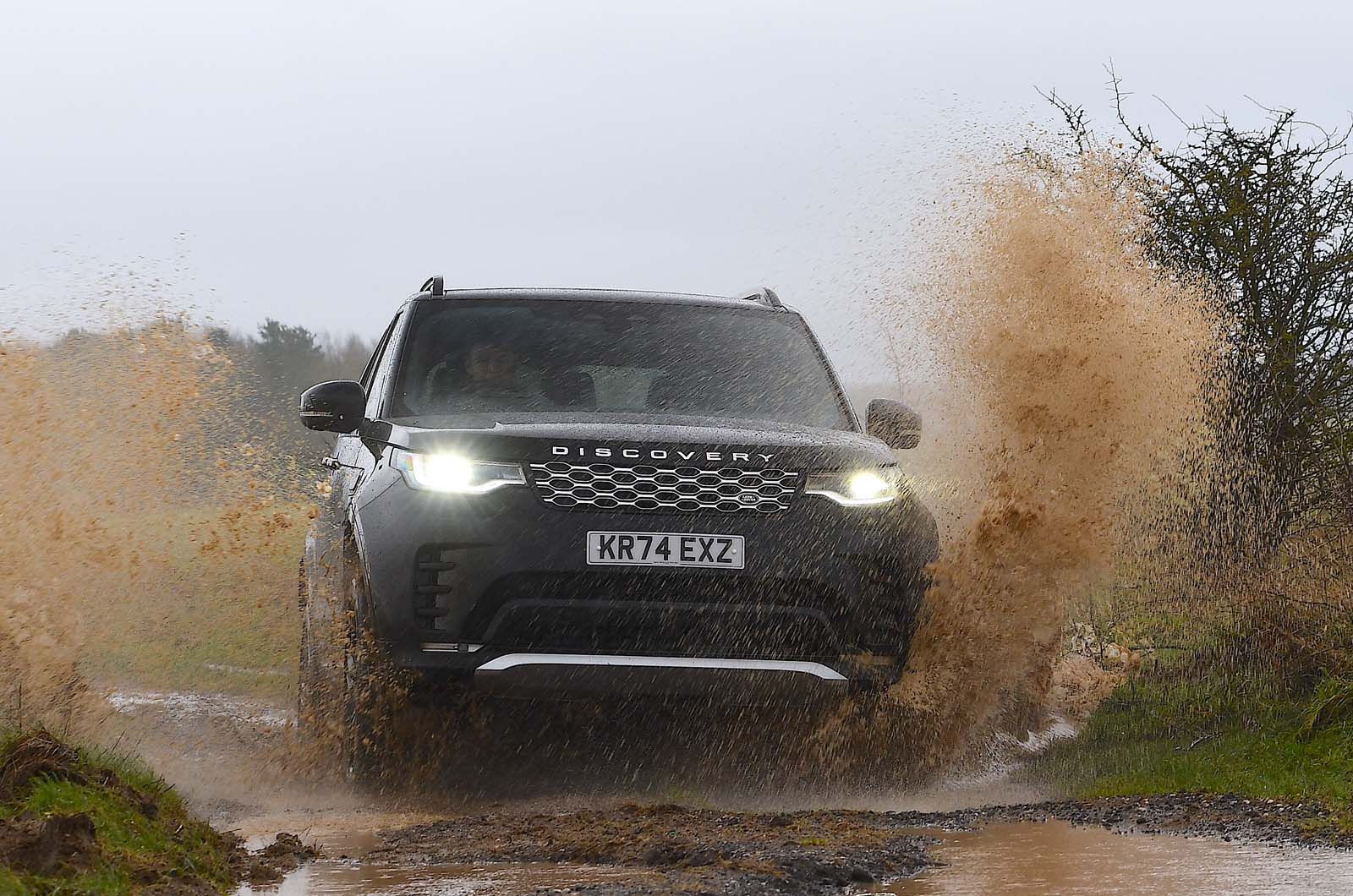The Discovery’s cabin majors on both practicality and space while also offering enough luxury feel and usable tech to make it appealing to ride around in.
Material richness and perceived quality are both very good but perhaps not quite class-leading. Indeed, key touch points like the steering wheel, gear selector and doors all feel of high quality. There are some cheaper elements however, such as on the centre console, but we’re talking about very fine margins compared to rivals.
The 11.4in Pivi Pro curved touchscreen is good. Despite being a little laggy to inputs, it's well-configured and easy to use. Setting up Apple CarPlay is a seamless process (Android Auto is also available) and the head-up display is crisp and clear. Our test car’s Meridian sound system was also very good.
Underneath the touchscreen, unlike in the Discovery Sport and Range Rover, are various buttons and knobs for the air conditioning. We like the rotary dials for increasing the temperature and how you can push and pull them to change functions like the heated seats.
The haptic controls in between the dials are a little more fiddly, as you never quite know if you’ve pushed the right button. Still, it's far easier to operate than in some of its stablemates, whose climate controls are solely controlled via the touchscreen.
There’s a handy wireless phone charger underneath the air conditioning switches and two large cupholders in the centre console.
We’re a fan of the rotary dial for the off-road driving modes, which sits nicely in the centre console behind the tactile gear selector.
The seating position is high in the Discovery, but its tall body ensures there’s plenty of head room. The 20-way adjustable seats in our test car were very comfortable and it was easy to find a good driving position thanks to the electrically adjustable steering wheel.
Move to the rear and head and leg room are both generous, with more than enough space for three adults to sit comfortably.
Sure, the middle seat is a bit narrower, but it isn’t raised like most usually are, so a six-footer shouldn’t complain. Rear passengers get their own set of rotary controls for the air conditioning, too.
The second row is split 60/40, each portion sliding fore and aft as well as folding. In the third row, the Discovery is head and shoulders more spacious than its rivals.
Our test car’s third-row seats were also heated and had their own Isofix points and USB points for charging electronic devices. So as a seven-seater for adult passengers, the Discovery remains unbeatable.
Its boot is among the class’s biggest, too. Our range-topping Discovery was fitted with electronically folding rear seats, but they’re a bit slow to rise and close.
You can also adjust the ride height of the car with buttons in the boot which is handy when loading a trailer, and there’s a small bench which folds down at the touch of the button. A push of a button here can also reveal the electric towbar. Nice.
Storage cubbies are hidden in places you least expect to find them, such as behind the ventilation controls and under sliding cupholders. Our test car also had massage seats (which were rather lovely) four-zone climate control and chilled drinks compartment in the centre console.
Overall, this Discovery’s cabin walks the line between functional pragmatism and premium-brand luxuriousness.


